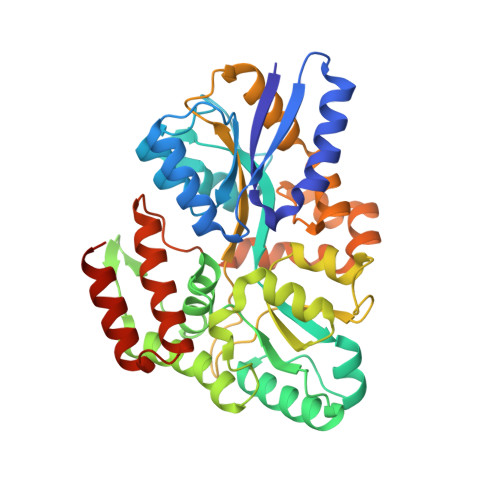The sulfoquinovosyl glycerol binding protein SmoF binds and accommodates plant sulfolipids.
Snow, A.J.D., Sharma, M., Lingford, J.P., Zhang, Y., Mui, J.W., Epa, R., Goddard-Borger, E.D., Williams, S.J., Davies, G.J.(2022) Curr Res Struct Biol 4: 51-58
- PubMed: 35341160
- DOI: https://doi.org/10.1016/j.crstbi.2022.03.001
- Primary Citation of Related Structures:
7QHV, 7YZS, 7YZU - PubMed Abstract:
Sulfoquinovose (SQ) is the anionic headgroup of the ubiquitous plant sulfolipid, sulfoquinovosyl diacylglycerol (SQDG). SQDG can undergo delipidation to give sulfoquinovosyl glycerol (SQGro) and further glycoside cleavage to give SQ, which can be metabolized through microbial sulfoglycolytic pathways. Exogenous SQDG metabolites are imported into bacteria through membrane spanning transporter proteins. The recently discovered sulfoglycolytic sulfoquinovose monooxygenase (sulfo-SMO) pathway in Agrobacterium tumefaciens features a periplasmic sulfoquinovosyl glycerol binding protein, SmoF, and an ATP-binding cassette (ABC) transporter. Here, we use X-ray crystallography, differential scanning fluorimetry and isothermal titration calorimetry to study SQ glycoside recognition by SmoF. This work reveals that in addition to SQGro, SmoF can also bind SQ, a simple methyl glycoside and even a short-chain SQDG analogue. Molecular recognition of these substrates is achieved through conserved interactions with the SQ-headgroup together with more plastic interactions with the aglycones. This suggests that the solute binding protein of A. tumefaciens, and related SQ-binding proteins from other sulfoglycolytic pathways, can provide their host organisms direct access to most of the SQ metabolites known to be produced by phototrophs.
- York Structural Biology Laboratory, Department of Chemistry, University of York, York, YO10 5DD, UK.
Organizational Affiliation:

















